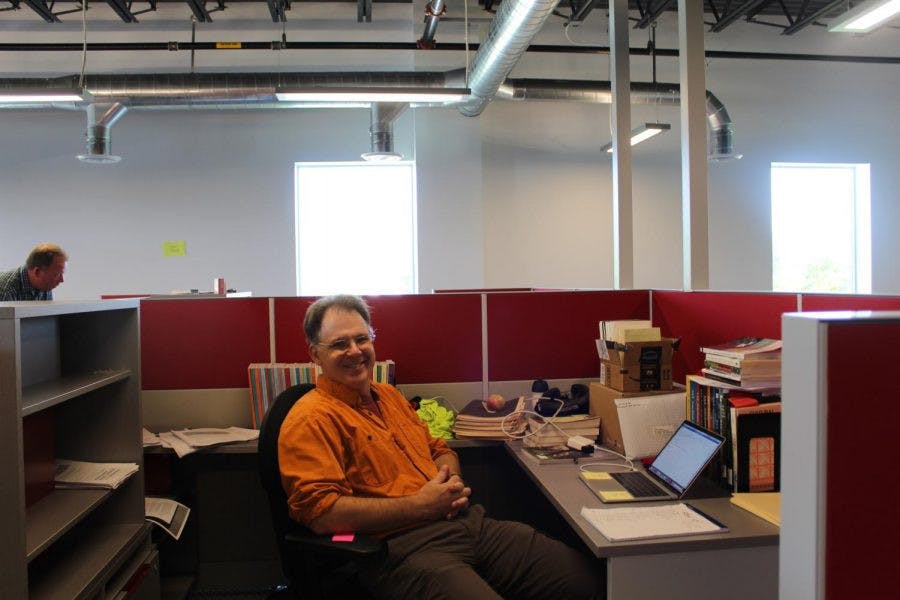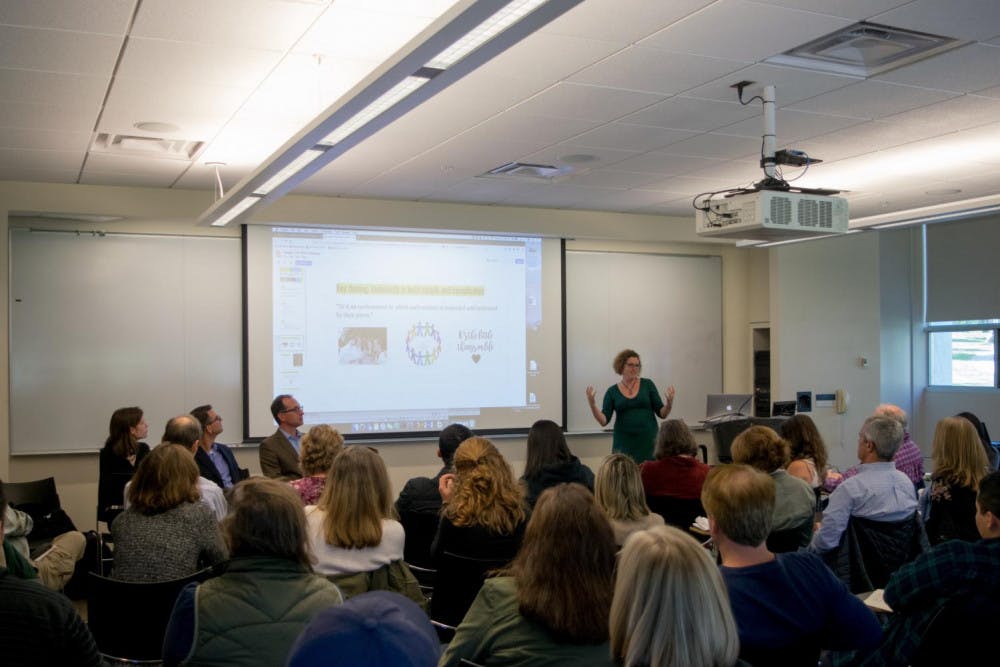This week, professors are wrapping up the final days of remote learning for the spring semester. Considering the challenges posed by Covid-19, professors showed increased flexibility as they reworked their syllabi; some even adapted their courses in creative ways to incorporate the pandemic into their teaching.
But a contentious debate over the college’s remote grading policy raised questions of equity, opportunity and motivation, with organizers on both sides raising an important point — students and professors all experience remote learning very differently.
Many students’ lives have been severely disrupted by the virus. Some returned home to parents who are fighting on the frontlines of Covid-19, while others had to navigate housing insecurity and address health concerns — including possibly becoming infected themselves.
[pullquote speaker="" photo="" align="center" background="on" border="all" shadow="on"]The playing field of a regular classroom, which was already tilted by unequal access to educational opportunities, has been replaced by a social platform with new inequities. I worry about that a lot, and not just in terms of my classes, but for how those classes will play out in the longer term.[/pullquote]
Anthropology professor Michael Sheridan expressed concern about the long-term consequences of remote learning. Sheridan was one of the co-signers of the faculty motion for a mandatory credit/no credit system, which faculty voted down on April 17.
“The playing field of a regular classroom, which was already tilted by unequal access to educational opportunities, has been replaced by a social platform with new inequities,” he wrote in an email to The Campus. “I worry about that a lot, and not just in terms of my classes, but for how those classes will play out in the longer term. Will the students who took a required course that’s a building block for their major only get 50–75% of the learning done? Will that affect other classes down the road?”
Professor of Psychology Jennifer Sellers said Canvas and Zoom are poor substitutes for the in-person classroom dynamic.
“As an instructor, I don’t have the cues to work with as I am assessing in real time how students are responding to material,” Sellers wrote in an email to The Campus. “I also have less of an idea what their environment is like, so I’m not as able to draw connections for them. It’s also more difficult to engage the affective component of learning without that in-person connection.”
Sellers chose to teach her classes asynchronously to provide her students with additional flexibility. She organized students into smaller groups within the class in order to help them maintain the peer connections that are essential to learning.
“I feel like I’m speaking into the ether with little idea how the sentences are landing,” Sheridan wrote. “I can’t see that person at the back of the room who’s wrinkling their brow with some sort of frustration during a lecture who I can ask what they’re thinking. It means that a lot of the intentions that come across in the class are mine, because I’m the one recording a lecture alone.”
Internet speed and reliability also pose challenges for faculty and students alike. Network infrastructure is being strained as people work from home, leading to unreliable connections on Zoom and other video-conferencing platforms. Sellers and Sheridan both faced difficulties with limited bandwidth in their homes.
“My big challenge is that I live in Cornwall and we have limited bandwidth just about every morning for the whole town,” Sheridan wrote. “There is no cable, only two roads have fiber optic internet. And there are five people in my house who all need to live their lives online at the same time. We yell to one another, 'Everybody get offline for 10 minutes so I can do X!'"

BiHall as seen from The Knoll in February 2019.
Environmental Studies professors Marc Lapin and Peter Ryan have been co-teaching "Natural Science and the Environment," an introductory Environmental Studies course, this semester. Distance learning poses particular challenges for classes with lab components, as field trips and lab experiments can no longer take place in-person. But Lapin and Ryan have substituted them with data sets, virtual field trips and other online content. Both explained that they are happy with student engagement and the quality of their work.
“ES112 labs are now me delivering data, including watershed land cover-land use maps and numerical data on that and on water quality ([Phosphorus] and [Nitrogen] in Middlebury River), and the students do some graphing and interpretation,” wrote Lapin, who teaches the lab section of the course. “We had a ‘virtual’ farm tour using some excellent videos of a very forward-thinking regenerative farm in the southern U.S., and the students did a systems sketch model as they would have had we visited a farm on the ground.”
Ryan, who teaches the lecture section, noted that he has seen greater engagement from some students during distance learning. “I am finding that written discussion forums provide an opportunity for students to participate in a way that is different than speaking up in class, so I have seen higher levels of insightful participation from some students that are not the type to speak up frequently in class, and I will carry that information forward into subsequent terms,” he wrote.
Building community
Despite all of the challenges created by remote learning, it has also created the possibility for a more compassionate and intentional learning environment. Katie Ostrow ’23, a psychology major, is happy with the support she has received from her professors.
“For my classes that are meeting synchronously, all of those professors either at the beginning of each class or at the beginning of the week take the time to check in with each student personally, giving them as much time as they’d like to share as little or as much as they’d like with the class about how they are doing,” Ostrow wrote in an email to The Campus.
She explained that in her creative writing class, students created a Google Doc to share recipes, TV shows, films, and books, and that they often send informal class-wide emails to share ideas or simply maintain regular contact with each other.
“Little things like this have, at least for me, made this extremely difficult time just a little more bearable.”

Professor Sheridan in his office in November 2019.
Bochu Ding ’21 said remote learning has given him a view into his professors’ personal lives. He explained how Sheridan is connecting with his class from afar.
“There’s a little discussion thread under ‘announcements’ on Canvas called community building where we can share updates about our lives — recipes, funny photos, etc,” Ding wrote. “We also have a group chat with him and he sent us a photo of his dinner one night.”
However, Sheridan said his biggest challenge is maintaining personal connections with his students.
“We very much need to connect with one another, just to talk about how we’re having super vivid dreams so we can find out that we’re not alone,” he wrote. “We need the informal moments that happen before and after class, over lunches in Proctor, and walking across campus. We can’t reproduce those online, so I try to make some space in classes on Zoom for people to hold their dogs and cats on their laps.”
Sellers echoed a similar sentiment. “Some students are worried about bothering professors, so they are less likely to reach out,” she wrote. “When I see students every week, I can usually check in and make sure things are going well. Also, I just like the short conversations I can have before and after classes. I like knowing the things that are on students’ minds. Small moments have big impacts.”
Editor’s note: Bochu Ding ’21 is a managing editor for The Middlebury Campus.

Emmanuel Tamrat '22 is Digital Director.
He began working for The Campus as a photographer and online editor in the fall of 2018, and previously served as senior online editor.
An Environmental Policy major, Tamrat hails from London, GB but calls Alexandria, VA home. At Middlebury, he is involved in Rethinking Economics and works as a Democracy Intiatives Intern with the CCE.




